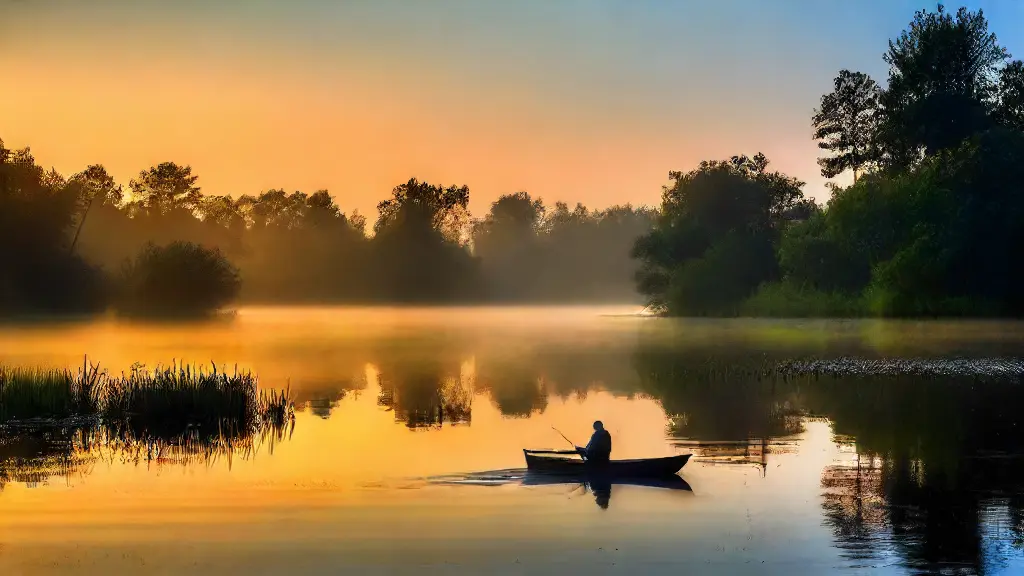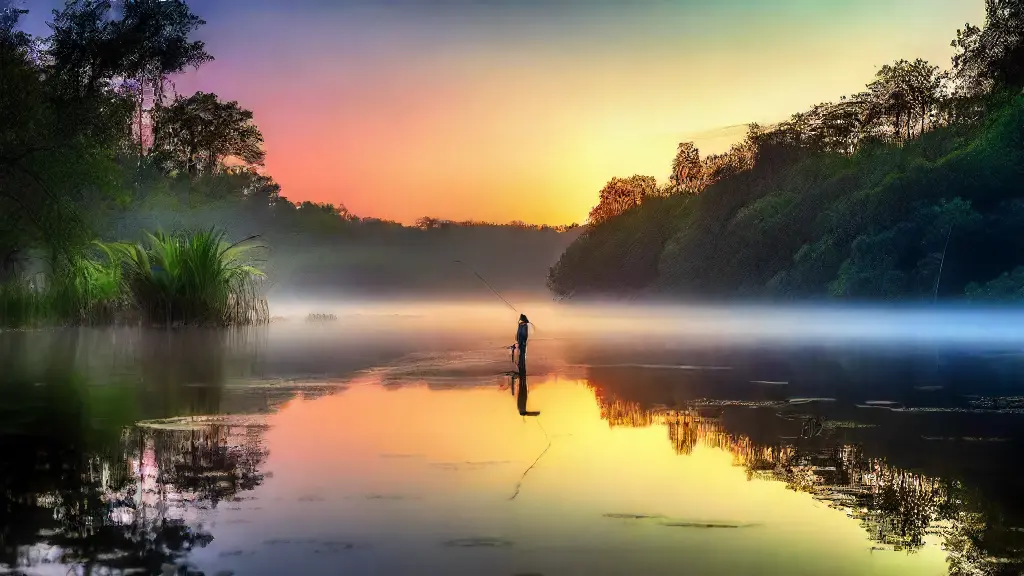How to Fish Shallow Water for Muskie

The art of angling in shallow water presents a unique challenge, where anglers must employ a strategic combination of technique, presentation, and strategy to entice the elusive Muskie into striking.
Fishing the shallows for Muskie can be as intense as a game of cat and mouse, where the predator lurks mere inches beneath the surface, waiting to strike.
Understanding Muskie Habits and Preferences
Muskie are most active during dawn and dusk when water temperatures are changing, making these periods ideal for catching these territorial fish.
Weed Beds, Sunken Logs, and Rocky Drop-Offs.
Fishing
The thrill of landing a prized catch lies in mastering the intricate relationships between water conditions, lure selection, and fish behavior.
I.
Understanding the Environment
Determine optimal water temperature range, typically between 55-65°F, to find fish more active and willing to strike.
Structure and cover, such as weed-covered banks and sunken logs, provide hiding spots and ambush points for fish seeking refuge.
Thermoclines, the transition zones between warm and cool water, significantly affect fish behavior and movement, making them key to effective fishing strategies.
II. Choosing the Right Lures by using the right bait and considering structure, such as weed and grass banks, along with a good casting or trolling technique to present the lure effectively near the bottom.

Technique in Shallow Water
Riverbank dwellers and anglers alike are familiar with the serenity that surrounds the gentle lapping of water against rocky shores. Expert anglers know that the water’s edge can be a minefield, requiring a delicate touch and a deep understanding of the surrounding environment.
In shallow water, the subtlest variation in water conditions can significantly impact your fishing technique.
Understanding the depth, clarity, and flow of the stream is crucial for success.
Fine-tuning your approach involves adapting your presentation to the specific water conditions. This means adjusting your lure speed, action, and depth to match the river’s characteristics.
Shore banks and river mouths often hold valuable muskie haunts, but it’s essential to present your lure effectively to elicit a strike. A moderate action and trajectory are ideal for shallow water, as they can be worked effectively just off shore.
Muskie Tactics Needed
Identifying and exploiting the patterns and habits of elusive predators like muskie.
When it comes to muskie fishing, patterns and habits are key to identifying prime fishing spots.
Muskie tend to follow established routes, such as rocky shorelines and weed beds, where baitfish and other prey are abundant.
In the quest for muskie, water temperature and structure also play a significant role in muskie behavior.
In warm lake conditions, they tend to congregate in areas with abundant cover, such as submerged logs or rock piles, to escape the cold weather.
In cold weather, they become more sluggish and can be found near structures that provide warmth, like drop-offs or sunken trees, in freshwater ponds. Choosing the right lure for the lake, pond, or freshwater fishing depends greatly on the weather and water conditions, whether warm or cold.
Best Presentation for Catch
As the sun rises over the calm waters, anglers flock to the shallows in search of a bountiful catch. In the world of fishing, understanding the shallow water habitat is crucial for a successful catch.
Water Temperature and Structure: Typically, the optimal water temperature for fishing in shallow waters ranges from 60°F to 80°F (15°C to 27°C), while the structure can be a submerged log, rock, or weed bed.
Submerged Vegetation and Structural Elements: Vegetation such as water lilies, cattails, and aquatic grasses play a vital role in providing shelter for fish, and structural elements like drop-offs, channels, and points can concentrate fish populations seeking a prime spot.
Timing plays a crucial role in selecting the ideal lure, with faster moving velocity of the water considering the season, spot, location and the muskie’s behavior.
Facts About Shallow Water Fishing
- The optimal water temperature for fishing in shallow waters typically ranges from 60°F to 80°F (15°C to 27°C).
- Submerged logs, rocks, and weed beds can provide structure for fish to inhabit in shallow waters.
- Fish can be concentrated in shallow waters around structural elements like drop-offs, channels, and points.
- The velocity of the water can affect the movement and behavior of fish, and should be considered when selecting a lure.
How to Bait Muskie
As the morning mist lifts, the muskie begins to stir, its powerful tail thrashing the water in search of its next meal. Understanding the habits of these elusive predators is crucial for success on the water.
When it comes to muskie, behavior is key.
They prefer areas with 2-6 feet of water, making shallow waters a hotspot for potential catches.
Submerged vegetation is also a haven for these fish, providing them with a hideout from curious prey. Typically, they feed on smaller fish and crayfish, making lures that mimic these prey species an effective choice.
With the right lure, presentation, and retrieval techniques, we can entice a muskie bite. Small jigs with curly tail worms or minnows, soft plastics like lizards, and even crankbaits can be effective choices. The key is to understand the complex interplay of Direction, Wind, Tide, Pressure, and the behavior of Baitfish, Insects, and Crustaceans.
When to Cast for Muskie
The thrill of reeling in a behemoth, the mighty muskie, is a challenge many anglers eagerly anticipate. As the sun rises over calm waters, a symphony of elements converges to create an environment where these elusive predators thrive.
Weather Conditions: Timing is Everything.
Weather forecasts can be unreliable, but one thing is certain – muskie are highly sensitive to changes in atmospheric pressure.
When a low-pressure system is brewing, the fish become more active, making it the perfect time to cast your line.
Water Temperature: A Critical Factor.
Spinner immigrants, as they are sometimes affectionately called, thrive in temperatures between 50°F and 70°F (10°C and 21°C).
This range is crucial for their metabolism, growth, and, of course, feeding habits. The angler used a Crank, Spoon, Jig, Fly, Spinner, and Rig to catch a lot of Fish.
Facts About Muskie Fishing
- Muskie are highly sensitive to changes in atmospheric pressure.
- The ideal water temperature for muskie fishing is between 50°F and 70°F (10°C and 21°C).
- The symphony of elements that converges to create an environment where muskie thrive includes weather conditions and water temperature.
- A low-pressure system can make it the perfect time to cast your line for muskie fishing.
Effective Lure Selection
As I slip into my favorite fishing spot, the quiet morning air is filled with anticipation. Leader lines cast lazily across the water, waiting to entice the next big catch.
When it comes to muskie fishing, a well-crafted strategy is crucial, and that begins with selecting the right lure.
Rattle Jigs, Spinnerbaits, and Crankbaits are three popular options that can produce impressive results.
When a Vibrate Jig dances across the water, its subtle quiver creates a commotion that can’t be ignored. The Retrieve of the lure is key to enticing even the most finicky muskies.
One aspect to consider when choosing a lure is the vibration it produces. Did you know that this subtle vibration can be quiver praised by muskies, enticing them to take a bite? It’s true – when a lure vibrates with an unpredictable sink, a musky can’t help but strike with a hook at the exact moment you retrieve it.
Can You Catch Muskie Quietly
The thrill of the chase is matched only by the satisfaction of reeling in a trophy-sized muskie. Effective fishing requires a delicate balance of skill, knowledge, and patience, as one must tiptoe through the water, soundless as a whisper, to capitalize on the perfect moment to strike.
Silence is Golden
Understanding the importance of silence in muskie fishing is crucial for a successful catch.
It’s essential to minimize noise and vibrations while fishing in shallow water, as any sudden movement can scare off these elusive creatures.
Reading the Water
When fishing in shallow water, it’s vital to identify key structural features that muskie frequent. Look for areas with a mix of sand, rocks, and weeds, as these provide the perfect hiding spots for these stealthy predators. To tempt muskie in shallows, one must use a Mysterious lure, presented Stealthy, with patience and a Quiet, Soundless, Silent approach.
| Key Elements for Successful Muskie Fishing | Importance | Why? | How? |
|---|---|---|---|
| Silence | Crucial | Minimize noise and vibrations to avoid scaring off muskie | Move slowly and quietly, avoid sudden movements |
| Reading the Water | Vital | Identify key structural features that muskie frequent | Look for areas with a mix of sand, rocks, and weeds |
| Mysterious Lure | Essential | Use a lure that mimics natural prey | Present the lure stealthily and with patience |
Top Muskie Lures for Summer Fishing
Using Swimbaits for Muskie


